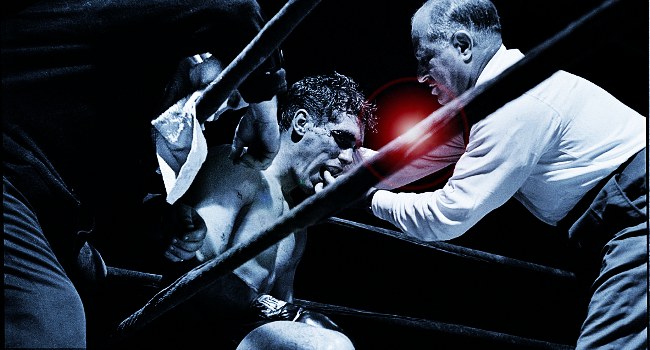Ken Eakins — the fearless leader of the Coincidence Control Network podcast — and I have both been battling early fall colds and we have yet to get our latest episode edited and released. We’ve decided to reset this week and skip recording a new show so we can get the last one squared away and out to our listeners.
With that in mind, I’m posting this great little insight into the early career of filmmaker Stanley Kubrick — I was going to talk about it on this week’s show. When young Kubrick first started shooting moving images, he was employed as a photographer at Look magazine and worked on his films during evenings and on weekends.
Although these nascent efforts are notable only in light of Kubrick’s later genius, all of these beginning efforts look great and they demonstrate how Kubrick’s formidable visual sensibilities were already engaged even as he first turned to the screen. Kubrick even pulls off a shot directly beneath both of the boxers. He uses the same technique again when he shoots Jack Nicholson yelling at Shelley Duvall after she locks him in the freezer in The Shining.
Open Culture brings the goods on the boxing documentary Day of the Fight:
Kubrick decided to make a film about middleweight boxer Walter Cartier, who he had done a photo story on for Look the previous year. He rented a spring-loaded 35mm Bell & Howell Eyemo camera and dived into the project. “I was cameraman, director, editor, assistant editor, sound effects man–you name it, I did it,” Kubrick told Gelmis. “It was invaluable experience, because being forced to do everything myself I gained a sound and comprehensive grasp of all the technical aspects of filmmaking.”
The resulting film, Day of the Fight, brings the look and feel of film noir to the newsreel form. (Watch the complete 16-minute film above.) It follows Cartier and his twin brother, Vincent, in the hours leading up to his fight with a formidable opponent named Bobby James. The scenes were all carefully planned, except for the big fight at the end, which was filmed live on April 17, 1950 at Laurel Gardens in Newark, New Jersey.
Kubrick rented two Eyemos that night, one for himself and the other for Singer. Kubrick hand-held his camera and moved around–at one point even holding the camera underneath the boxers and shooting straight upward–while Singer provided basic coverage with his camera on a tripod. The Eyemos took 100-foot rolls of film, which meant Kubrick and Singer were constantly changing film. They tried to time it so that one was shooting while the other was reloading. “It was pretty busy and pretty hectic,” Singer told Vincent LoBrutto for Stanley Kubrick: A Biography. “We had to get it. It had to be down on film–there was no picture without getting this fight.”
They got it. When Cartier delivered the knock-out punch, Kubrick was reloading but Singer captured the moment. To complete the project, Kubrick hired his childhood friend Gerald Fried to compose music, and CBS newsman Douglas Edwards to provide narration. Day of the Fight was generally well-received. As LoBrutto writes, “Kubrick’s innate photographic sense and the passion he brought to the project resulted in a film devoid of the common pitfalls of novice filmmakers.”
Here is the full film Day of the Fight
Read the whole article and watch three of Kubrick’s early efforts here.
Stay Awake!
Please subscribe to my YouTube channel where I archive all of the videos I curate at Insomnia. Click here to check out more Cinema posts.








